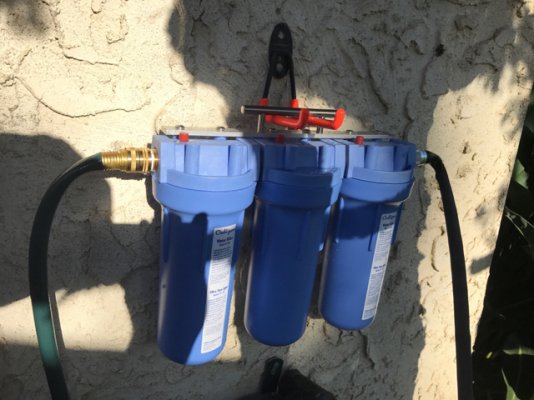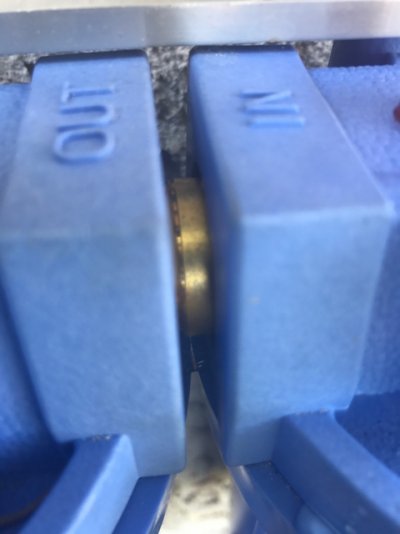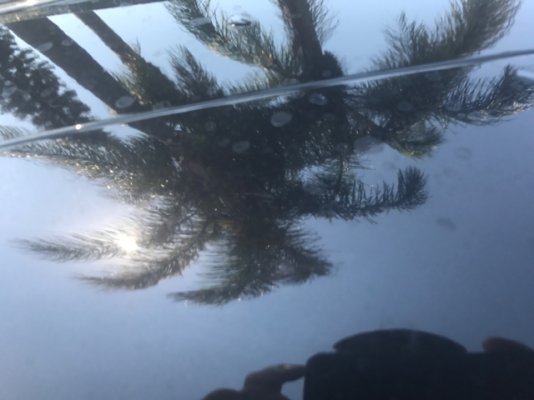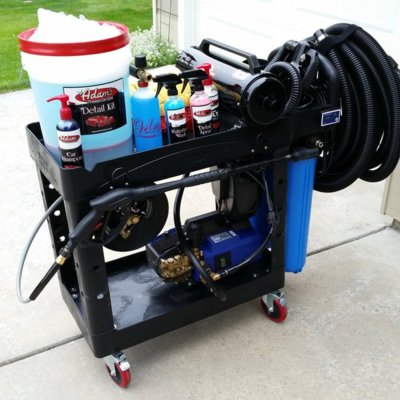I use the CR Spotless, and won't wash anything without it. It makes washing easier, I don't have to rush, or work around the temps or sun/shade.
And not towel drying means less chance for swirls.
I run the CR Spotless and use it for the entire wash process during the summer months, so I don't have to worry about heat or sun, or trying to hurry before the wash water dries. I got about 12 complete washes out of the resin, which makes for some pretty high ongoing costs.
During this past winter, I only used the DI water for the final rinse and used regular water for the pre-rinse and with the foam cannon for washing. This worked fine as it was often overcast and cool, or just plain cold. Only using the DI water for the final rinse makes the resin last longer, lowering the cost per wash.
The life of the resin also depends on how hard your water is. Mine is not too hard, about 140 ppm. If you are interested in a DI system, first test your water and then use their tables to figure out how many gallons you will get for each resin refill. The last thing you would want to do is drop the big money on the unit only to find that the cost per wash is too high. If you don't want to buy a TDS meter to check your water hardness, you may also try to find someplace that will test a sample, like a store that sells water softeners.
Here's a link to the info on the CR Spotless and there is a table showing the total gallons that can be made based on your hardness. The big variable is how many gallons you would use for each wash.
https://crspotless.com/spotless-water-faqs/
An important thing to remember is that you need to check to make sure the resin is still working when you finish each wash. The CR Spotless unit has a built-in TDS (total dissolved solids) meter, which will read 000 when the resin is good, which means the water has no minerals in it. When you start to see numbers on the meter, it is time to replace the resin. Checking it after each wash also lets you know if you need to completely dry the car so it does not spot. The resin could be fine at your last wash, but then start to get exhausted during the current wash. The last thing you want is to assume the filters are working, only to come back later and find water spots that have to be polished off.
I will also point out that even though you can leave a soaking wet vehicle out in the sun to air dry on not get hard water spots (ie minerals left behind from regular tap water), I did find early on that leaving that much water on the vehicle tends to collect airborne dust in the pooled water and water drops, which then can be seen later. I also found that the water left in the nooks and crannies often contains soap residue, and having this drip out while it is drying results in visible drip-trails. For this reason, I use the Master Blaster (and previously used the Sidekick), to get about 90% of the water off, and to blow out the nooks and crannies, then let the rest dry.
Only downside is the cost of the resin, but the resin cost has actually dropped in price since CR Spotless started their recycling program.
While I have not logged specific usage, I typically replace the resin about 2-3x per year, and that is using it on two vehicles.
Also, they have just released a newer version that is an improvement. It has a more stable housing, and uses color-indicating resin so that you know when the filters are getting close to being spent, without having to check the meter.
If you are going to get one, get the newer version:
https://simplechuck.com/product/double-chuck-dark-blue/
There are additional considerations you should make before investing this amount of money. First and foremost is to test your water, so you can see how hard it is. Having fairly hard water (over 200ppm or so) increases your ongoing costs for resin.





